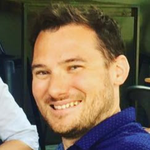
BIGOT Thomas
- Hub Bioinfo @ Département de Biologie Computationnelle, Institut Pasteur, Paris, France
- Bioinformatics & Computational Biology
Recommendations: 0
Review: 1
Review: 1

A novel workflow to improve multi-locus genotyping of wildlife species: an experimental set-up with a known model system
Improving the reliability of genotyping of multigene families in non-model organisms
Recommended by François Rousset based on reviews by Sebastian Ernesto Ramos-Onsins, Helena Westerdahl and Thomas BigotThe reliability of published scientific papers has been the topic of much recent discussion, notably in the biomedical sciences [1]. Although small sample size is regularly pointed as one of the culprits, big data can also be a concern. The advent of high-throughput sequencing, and the processing of sequence data by opaque bioinformatics workflows, mean that sequences with often high error rates are produced, and that exact but slow analyses are not feasible.
The troubles with bioinformatics arise from the increased complexity of the tools used by scientists, and from the lack of incentives and/or skills from authors (but also reviewers and editors) to make sure of the quality of those tools. As a much discussed example, a bug in the widely used PLINK software [2] has been pointed as the explanation [3] for incorrect inference of selection for increased height in European Human populations [4].
High-throughput sequencing often generates high rates of genotyping errors, so that the development of bioinformatics tools to assess the quality of data and correct them is a major issue. The work of Gillingham et al. [5] contributes to the latter goal. In this work, the authors propose a new bioinformatics workflow (ACACIA) for performing genotyping analysis of multigene complexes, such as self-incompatibility genes in plants, major histocompatibility genes (MHC) in vertebrates, and homeobox genes in animals, which are particularly challenging to genotype in non-model organisms. PCR and sequencing of multigene families generate artefacts, hence spurious alleles. A key to Gillingham et al.‘ s method is to call candidate genes based on Oligotyping, a software pipeline originally conceived for identifying variants from microbiome 16S rRNA amplicons [6]. This allows to reduce the number of false positives and the number of dropout alleles, compared to previous workflows.
This method is not based on an explicit probability model, and thus it is not conceived to provide a control of the rate of errors as, say, a valid confidence interval should (a confidence interval with coverage c for a parameter should contain the parameter with probability c, so the error rate 1- c is known and controlled by the user who selects the value of c). However, the authors suggest a method to adapt the settings of ACACIA to each application.
To compare and validate the new workflow, the authors have constructed new sets of genotypes representing different extents copy number variation, using already known genotypes from chicken MHC. In such conditions, it was possible to assess how many alleles are not detected and what is the rate of false positives. Gillingham et al. additionally investigated the effect of using non-optimal primers. They found better performance of ACACIA compared to a preexisting pipeline, AmpliSAS [7], for optimal settings of both methods. However, they do not claim that ACACIA will always be better than AmpliSAS. Rather, they warn against the common practice of using the default settings of the latter pipeline. Altogether, this work and the ACACIA workflow should allow for better ascertainment of genotypes from multigene families.
References
[1] Ioannidis, J. P. A, Greenland, S., Hlatky, M. A., Khoury, M. J., Macleod, M. R., Moher, D., Schulz, K. F. and Tibshirani, R. (2014) Increasing value and reducing waste in research design, conduct, and analysis. The Lancet, 383, 166-175. doi: 10.1016/S0140-6736(13)62227-8
[2] Chang, C. C., Chow, C. C., Tellier, L. C. A. M., Vattikuti, S., Purcell, S. M. and Lee, J. J. (2015) Second-generation PLINK: rising to the challenge of larger and richer datasets. GigaScience, 4, 7, s13742-015-0047-8. doi: 10.1186/s13742-015-0047-8
[3] Robinson, M. R. and Visscher, P. (2018) Corrected sibling GWAS data release from Robinson et al. http://cnsgenomics.com/data.html
[4] Field, Y., Boyle, E. A., Telis, N., Gao, Z., Gaulton, K. J., Golan, D., Yengo, L., Rocheleau, G., Froguel, P., McCarthy, M.I . and Pritchard J. K. (2016) Detection of human adaptation during the past 2000 years. Science, 354(6313), 760-764. doi: 10.1126/science.aag0776
[5] Gillingham, M. A. F., Montero, B. K., Wihelm, K., Grudzus, K., Sommer, S. and Santos P. S. C. (2020) A novel workflow to improve multi-locus genotyping of wildlife species: an experimental set-up with a known model system. bioRxiv 638288, ver. 3 peer-reviewed and recommended by Peer Community In Evolutionary Biology. doi: 10.1101/638288
[6] Eren, A. M., Maignien, L., Sul, W. J., Murphy, L. G., Grim, S. L., Morrison, H. G., and Sogin, M.L. (2013) Oligotyping: differentiating between closely related microbial taxa using 16S rRNA gene data. Methods in Ecology and Evolution 4(12), 1111-1119. doi: 10.1111/2041-210X.12114
[7] Sebastian, A., Herdegen, M., Migalska, M. and Radwan, J. (2016) AMPLISAS: a web server for multilocus genotyping using next‐generation amplicon sequencing data. Mol Ecol Resour, 16, 498-510. doi: 10.1111/1755-0998.12453